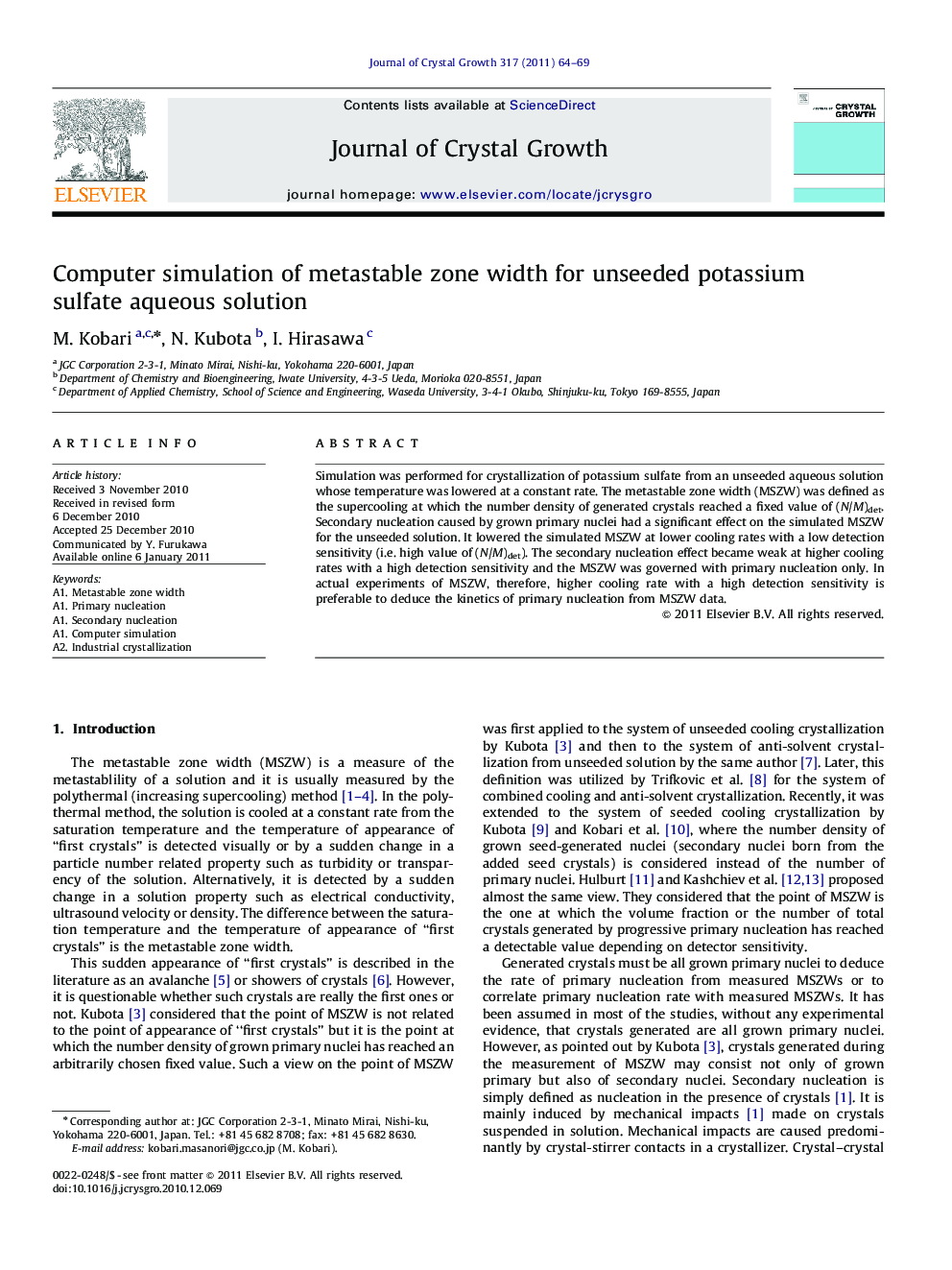| Article ID | Journal | Published Year | Pages | File Type |
|---|---|---|---|---|
| 1792716 | Journal of Crystal Growth | 2011 | 6 Pages |
Abstract
Simulation was performed for crystallization of potassium sulfate from an unseeded aqueous solution whose temperature was lowered at a constant rate. The metastable zone width (MSZW) was defined as the supercooling at which the number density of generated crystals reached a fixed value of (N/M)det. Secondary nucleation caused by grown primary nuclei had a significant effect on the simulated MSZW for the unseeded solution. It lowered the simulated MSZW at lower cooling rates with a low detection sensitivity (i.e. high value of (N/M)det). The secondary nucleation effect became weak at higher cooling rates with a high detection sensitivity and the MSZW was governed with primary nucleation only. In actual experiments of MSZW, therefore, higher cooling rate with a high detection sensitivity is preferable to deduce the kinetics of primary nucleation from MSZW data.
Keywords
Related Topics
Physical Sciences and Engineering
Physics and Astronomy
Condensed Matter Physics
Authors
M. Kobari, N. Kubota, I. Hirasawa,
